本文由 B.L.U.E.建筑设计事务所 授权mooool发表,欢迎转发,禁止以mooool编辑版本转载。
Thanks B.L.U.E. Architecture Studio for authorizing the publication of the project on mooool, Text description provided by B.L.U.E. Architecture Studio.
B.L.U.E.建筑设计事务所:项目是继北京国子监失物招领店铺后,我们与失物招领的第二次合作——位于杭州文化地标天目里的生活提案店。杭州天目里是由建筑师Renzo Piano设计的集办公、艺术空间、商业、秀场、 设计酒店等功能于一体的综合性园区。失物招领作为一个生活家居品牌,除家具以外,也提供包括手工陶艺、植物、居家器物、 织品等生活用品。此次设计中我们延续了家的概念,同时也呼应了失物招领品牌惜物的生活方式。空间设计围绕自然肌理 、手工工艺的核心展开,在天目里这样一个现代感的艺术园区里,呈现“家”的样貌和内涵。
B.L.U.E. Architecture Studio:Lost & Found’s OōEli store in Hangzhou is B.L.U.E.’s second cooperation with the furniture brand ‘Lost & Found’ after the renovation project for the brand at Guozijian Street in Beijing. Designed by Renzo Piano, OōEli in Hangzhou is a comprehensive art park incorporating offices, art spaces, retail, design hotels and show fields. Lost & Found is a lifestyle brand that provides not only solid wood furniture but also ceramics, utensils, fabrics and plants for daily life. During this collaboration, we continues to bring the concept and sense of ‘home’ into the store, echoing a way of life that cherishes things in daily life. The spatial design revolves around materiality of the interior, natural texture and artisan craftsmanship, reflecting Lost & Found’s philosophy of art and daily life.
店铺空间主要分为几组家具展示区和一个活动分享区。展示区由三个水洗石小盒子组成,划分出不同生活场景——客厅,餐厅,卧室。高低错落的墙面形成半围合半开放的小空间,赋予原本单一的空间更丰富的延展方式,给客人创造一种探索性的动线,像在街巷中一般,一边寻找一边发现。水洗石墙面粗粝的自然肌理,也给人一种温润的感受。
The whole retail space is mainly divided into furniture display area and an event space. The three scattered washed stone boxes together form the display space: each box area exhibits a living scene with carefully selected furniture collection. We intend to enrich the spatial experience in the long display space by inserting semi-enclosed box spaces with different wall heights and therefore making people to explore and wander in and between the boxes. The natural and rough texture of the washed stone walls provides a soft and warm atmosphere.
穿过展示区,是进行活动和展览的分享空间,空间形态是一个开敞的小木屋,收银台和试衣间也集中分布在木屋的一侧。它的灵感来源于茶园边上的小房子——踏上一级青石板,人们聚集在一个大的坡屋顶下面,虽然是在室内场所,却营造出一种在大自然中,人们在屋檐下休息的惬意生活场景。我们为分享空间的小房子设计了没有玻璃的木框推拉門,在视觉上轻盈地把家具展示区和分享空间分隔开来。房子的顶、地面和墙面使用失物招领家具常用的五种木材(榉木、胡桃木、白橡木、樱桃木、白蜡木)进行搭配拼接。小房子的推拉門以及店铺入口的平开門等细节设计也同样使用了这5种木材做混合搭配。对于木材的处理,在最大程度上减少人工的修饰加工,效果呈现出木材最天然真实的质感。
When customers pass through the display space, the cabin with a pitched roof can be seen. The cabin is to accommodate store events and temporary exhibition projects. Inspired by the tea fields in Hangzhou, we intend to create a sense of harmonious symbiosis between human and nature. The two stone steps connect the cabin and the display space, presenting a cozy and relaxed scene: people gather inside the cabin while others take a rest under the eaves in nature. The facade of the cabin provides a sense of openness since the wood-frame sliding doors visually separate the cabin lightly from the display space. Flooring, walls and ceiling of the cabin feature five different kinds of wood (beech, walnut, white oak, cherry and ash); all are of the materials which the brand use in their furniture making. The blend of different wood types extends to the detailed design of the wood sliding doors and the entrance of the store. Through the practice of solid wood materials, we attempt to form a dialogue with the brand’s furniture collection. The natural texture of the wood imparts a sense of warmth and tenderness for the space.
店铺的另一处亮点是进門一侧的木头展示墙。整个展示墙不仅是店内视觉的焦点,也可作为展示物品的功能性墙面。材料选择了家具工厂在生产中废弃的木料。在被工业品围绕的现代生活中, 废木料独特的质感体现着生活的累积和时光的沉淀。由于木料尺寸不一,状态不同,设计师在设计过程中无法依赖电脑出图,只能用实物进行手工实验推敲,最后在施工现场与工人师傅一起堆叠完成。这样即兴的建造方式,突破了常规的工作模式,也是一种新鲜的挑战。视觉墙的“设计”,不是经过准确的计算,而是靠时间、人工和手工经历时间慢慢产生和呈现的,建造的过程也赋予了材料情感,给最终的呈现效果带来一种独特的力量,唤起人们对日常的珍视。大面积的木材堆叠给空间内带来自然原始的气味,味道也会随着时间和人的体验发生变化。我们相信空间内特殊的感官体验拥有把人们重新带回线下店铺的力量。
Another feature of the store is the wall of timber at one side of the display space. Covered by stacked natural timber, the entire wall is a visual focus in the store, while functioning as a display area for small objects. In terms of materials, the wood we choose is old poplar wood remained from the production of the furniture factory. The old remaining poplar are stored in the warehouse for years before we reclaim them. The unique texture of the aged wood reflects a trace of time and a sense of familiarity. Because of the uniqueness of every single piece of the wood, we use them to build small-scale experiments at our studio to test its visual effect before we finally stack and build the wood together with the workers at the construction site in OōEli. The wall-making process in an improvisational and experimental way is a method relying on the interaction between time, wood and handcraft. The wood is endowed with emotions due to the design and making process, bringing a unique strength to its final presentation. The volume of the timber brings natural smell into the space, and the smell will change with time. We believe that the unique sensual experience has the power to bring people back to physical retail space in an age of booming e-commerce platforms.
利用自然和废弃的物料,用手工工艺建造,在人和时间的共同作用中,寻回日常生活的美和意义。这样的空间设计理念呼应了失物招领的品牌精神,同时,在天目里这个独特文化地标中的“家”,也体现着艺术和生活的交融。在如今城市快速发展的背景下,失物招领天目里店给了我们一个寻回丢失的日常生活和情感的可能性。
The beauty of the interaction between time, human and objects is a soft power that helps people to explore the beauty and meaning of daily life. The design philosophy responds to the lifestyle of cherishing things in everyday life advocated by the brand. In the context of rapid urban development and fast pace of life today, Lost & Found OōEli gives us a possibility of retrieving the lost daily life and emotions.
▼木头展示墙施工过程 Wood Wall Process Photos.
▼展示区及木屋轴测图 Axonometric – display area & event space.
▼平面图 Plan.
项目名称:失物招领 杭州天目里 生活提案店
项目地点:中国 杭州市西湖区 天目山路
项目类型:店铺 / 室内设计
建筑师:青山周平,陈雨圆,窦征,刘凌子
业主:失物招领
规模:一层
总建筑面积:225平米
主要材质:水洗石,浅灰色肌理涂料,榉木,樱桃木,白蜡木,橡木,黑胡 桃木,老杨木
设计周期:07.2020 – 09.2020
施工周期:09.2020 – 11.2020
摄影师:雷坛坛
Project Name: Lost & Found OōEli, Hangzhou
Project Location: Hangzhou, Zhejiang Province, China
Project Type: Retail / Interior Design
Architect: Shuhei Aoyama, Yuyuan Chen, Zheng Dou, Lingzi Liu
Client: Lost & Found
Size: Single-Floor
Building Area: 225 m²
Materials: Washed stone, Wood (beech, cheery, oak, walnut, ash), Old poplar
Design Period: 07.2020 – 09.2020
Construction Period: 09.2020 – 11.2020
Photography Credit: Tantan Lei
更多 Read more about: B.L.U.E.建筑设计事务所


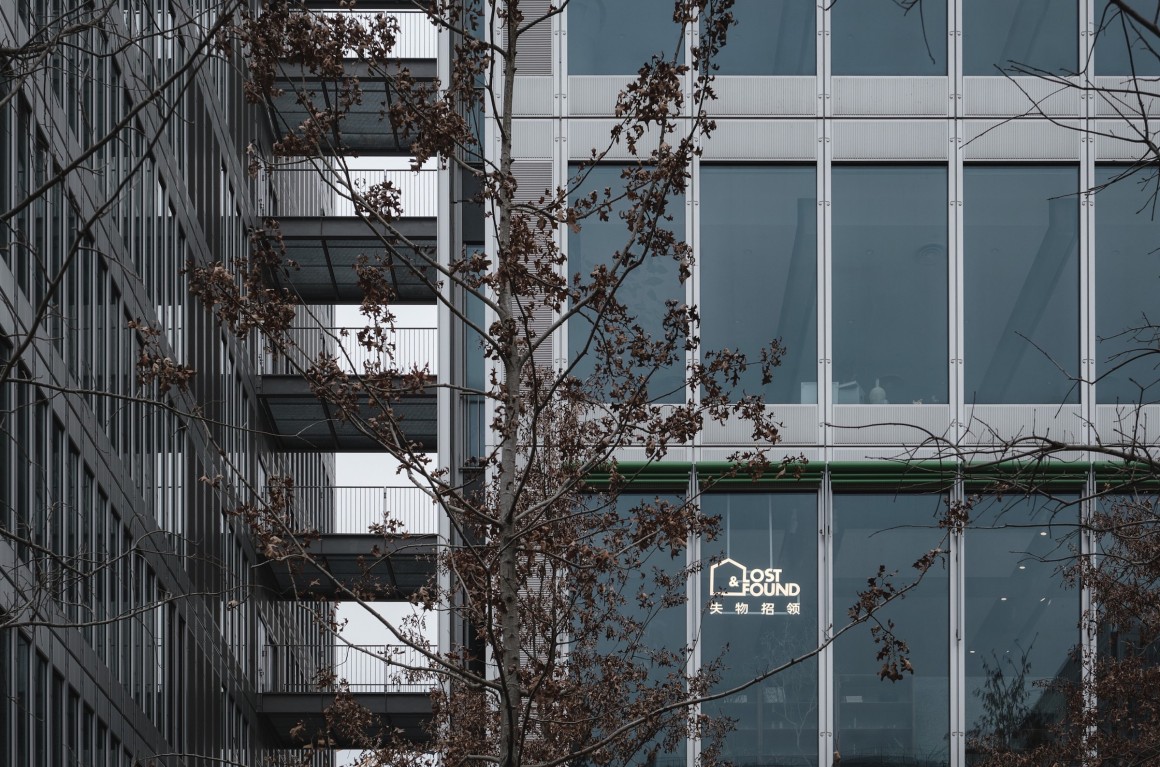
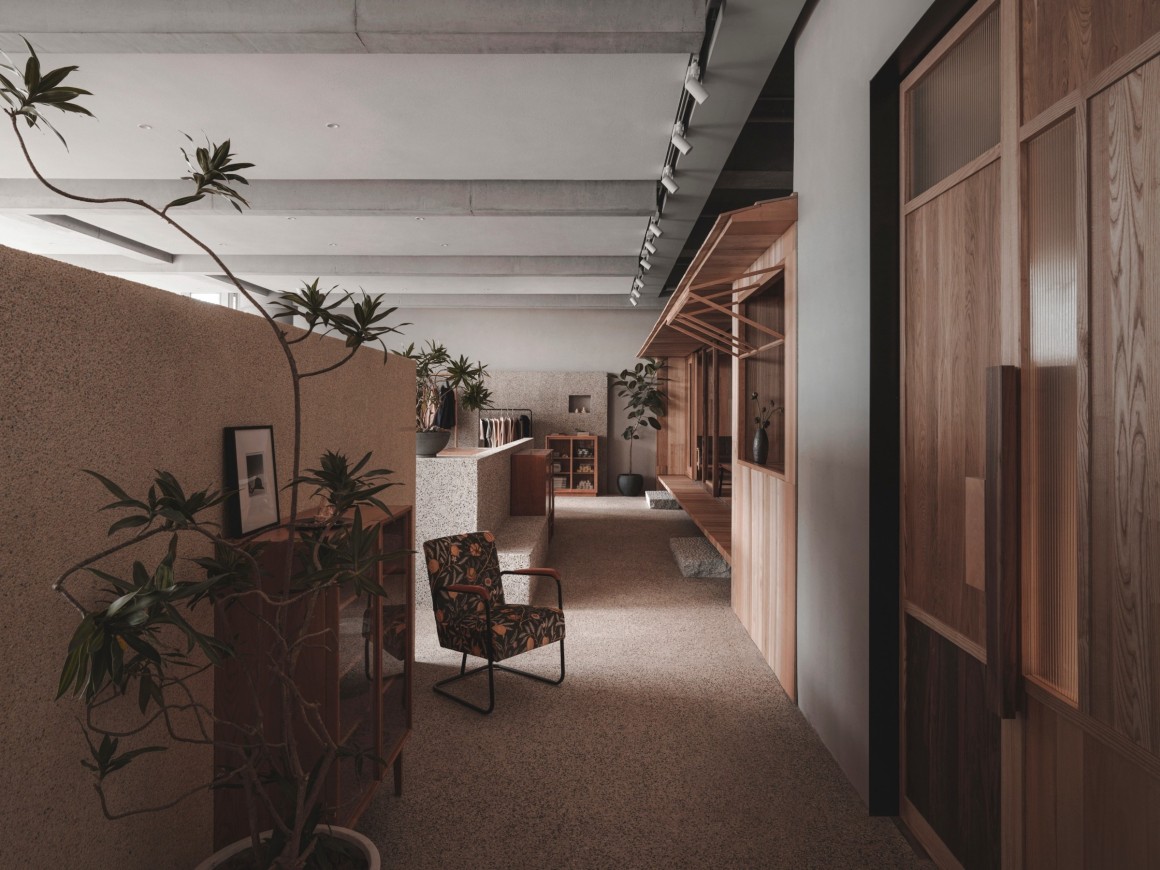

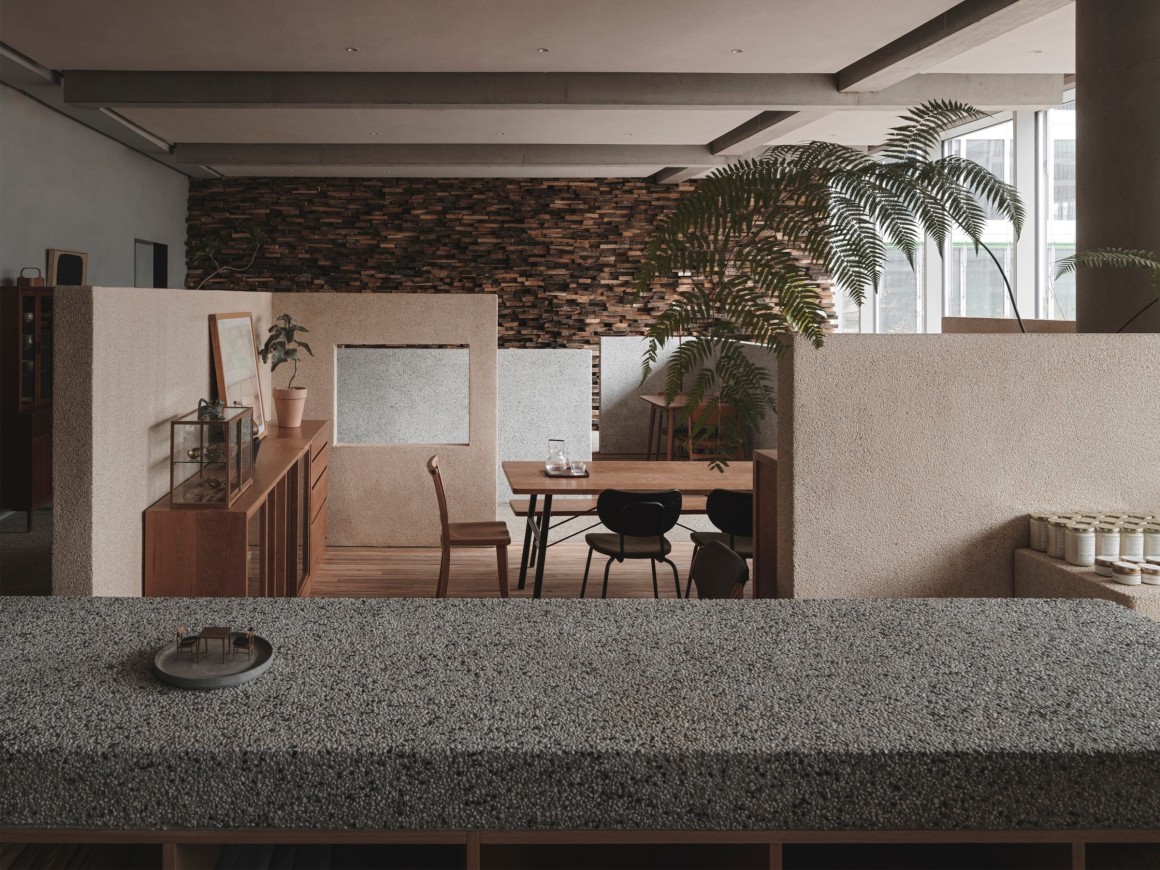
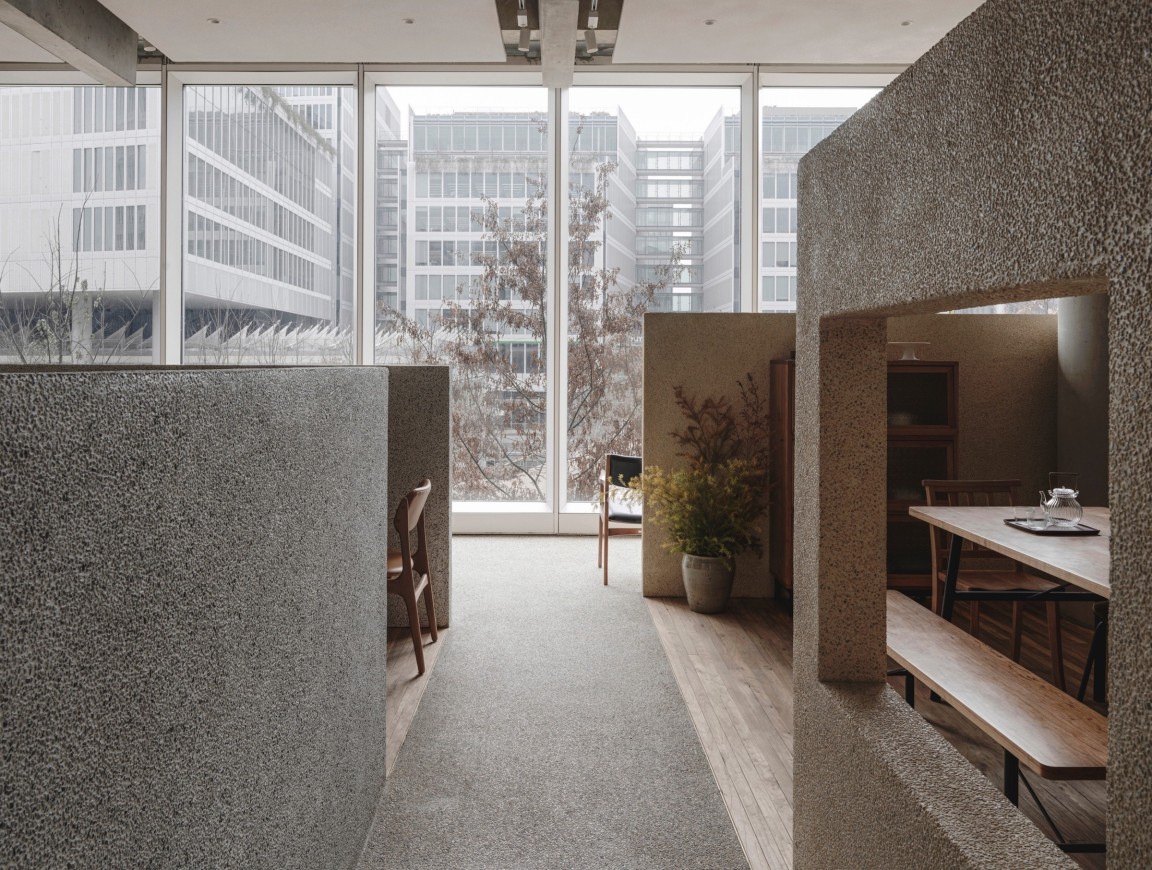
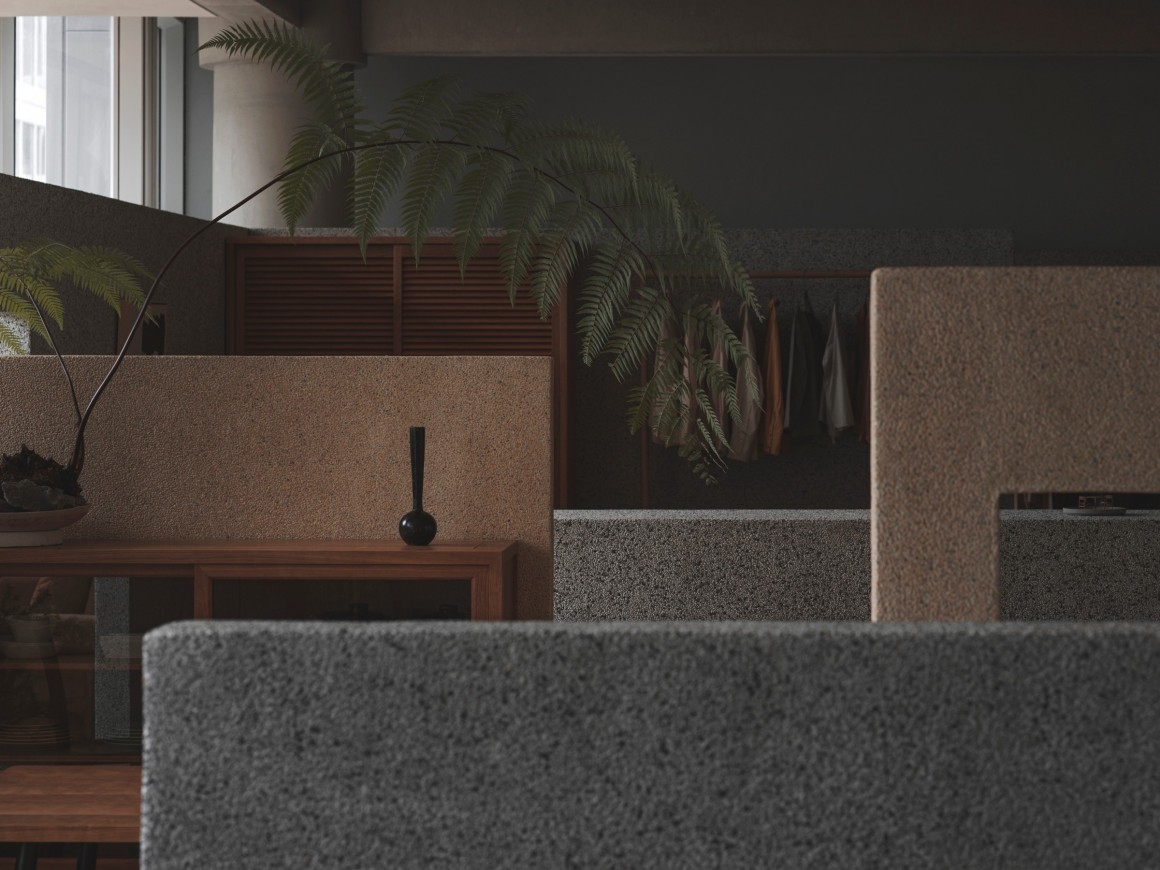
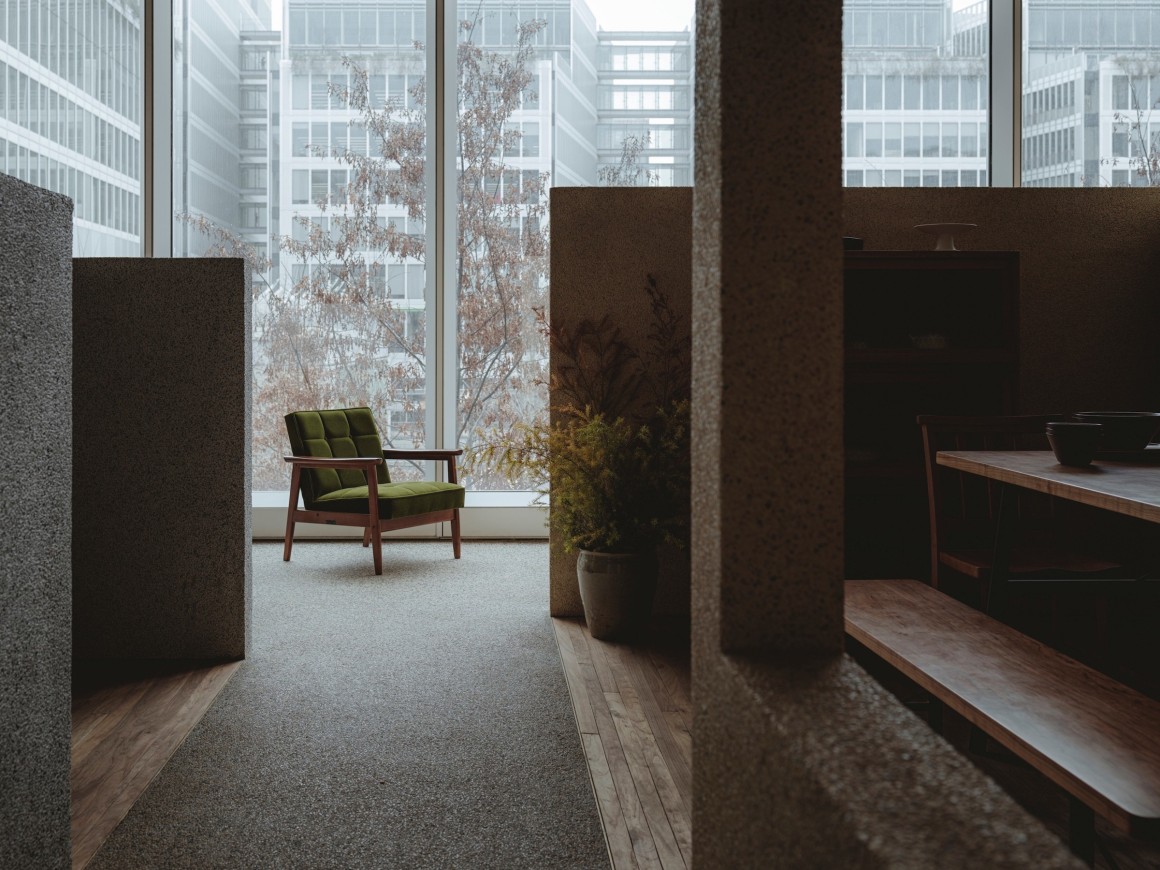

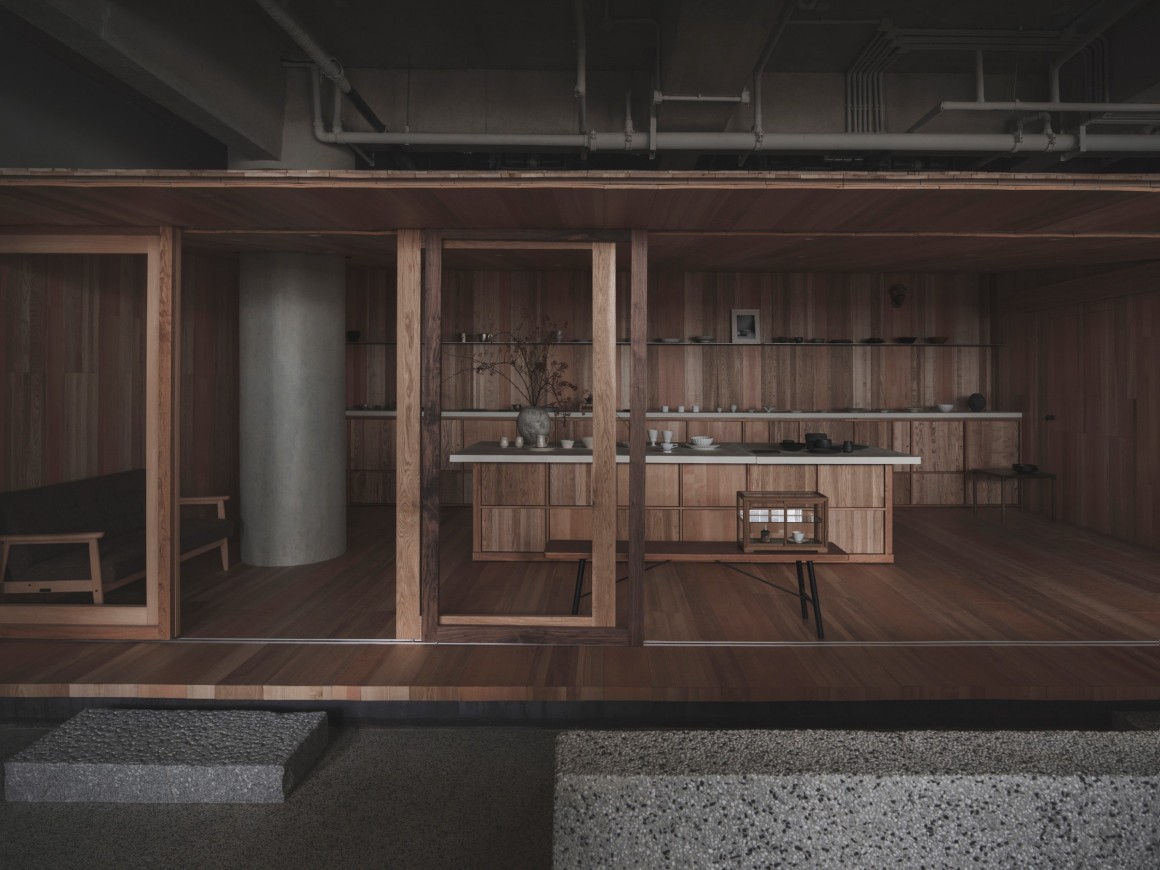
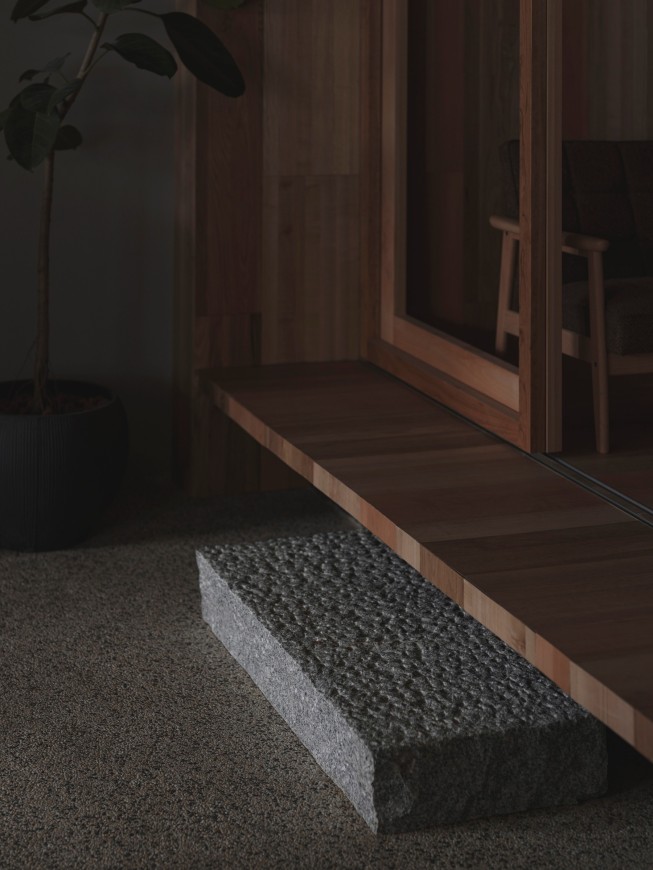

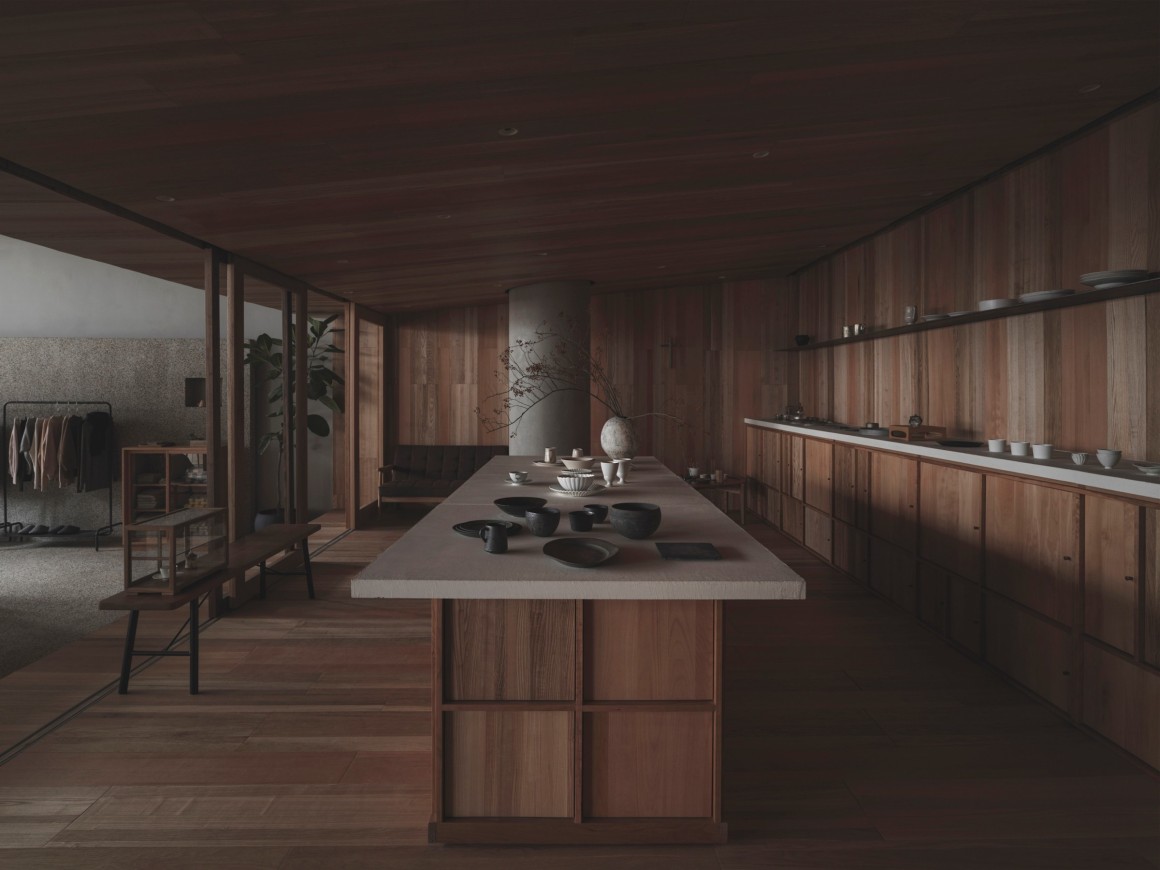

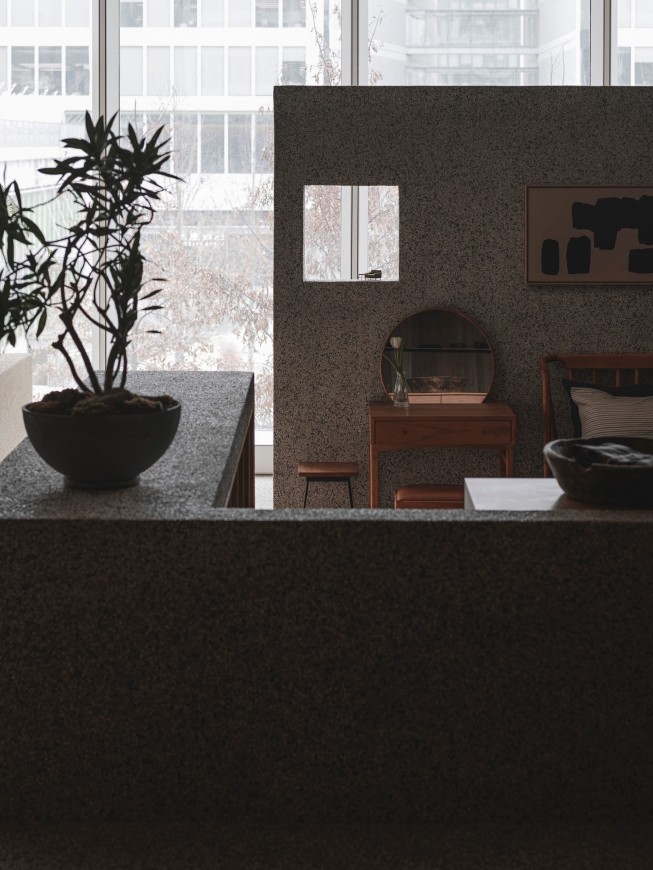

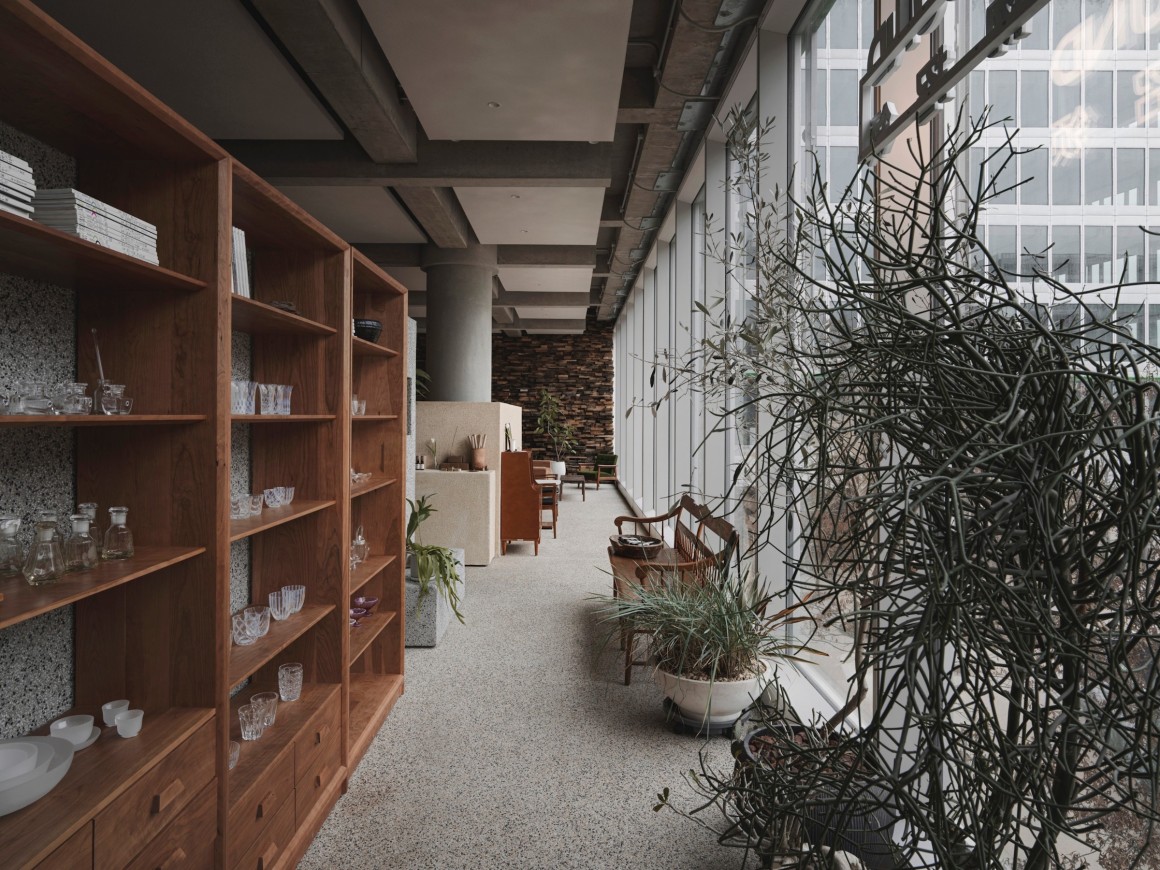

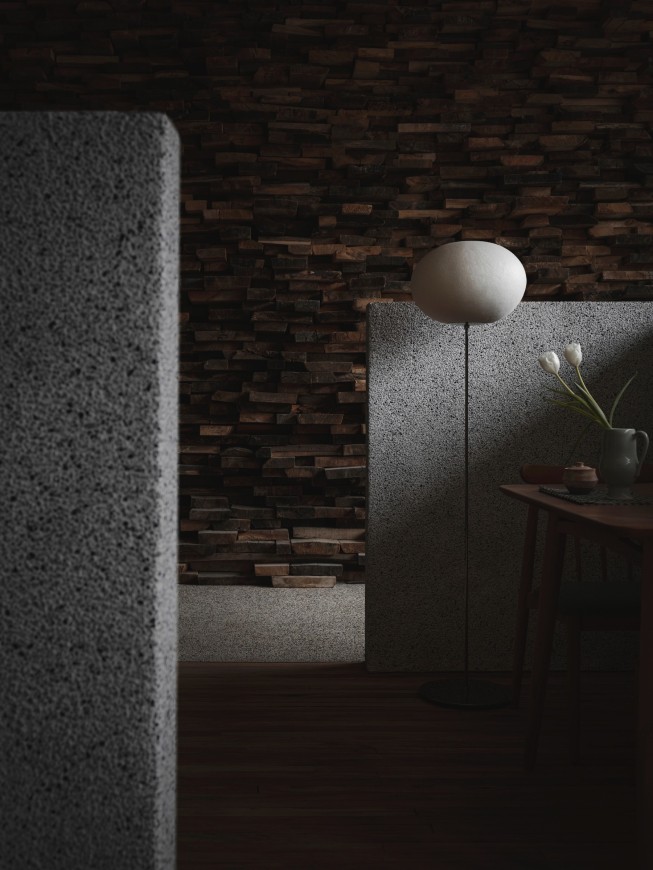
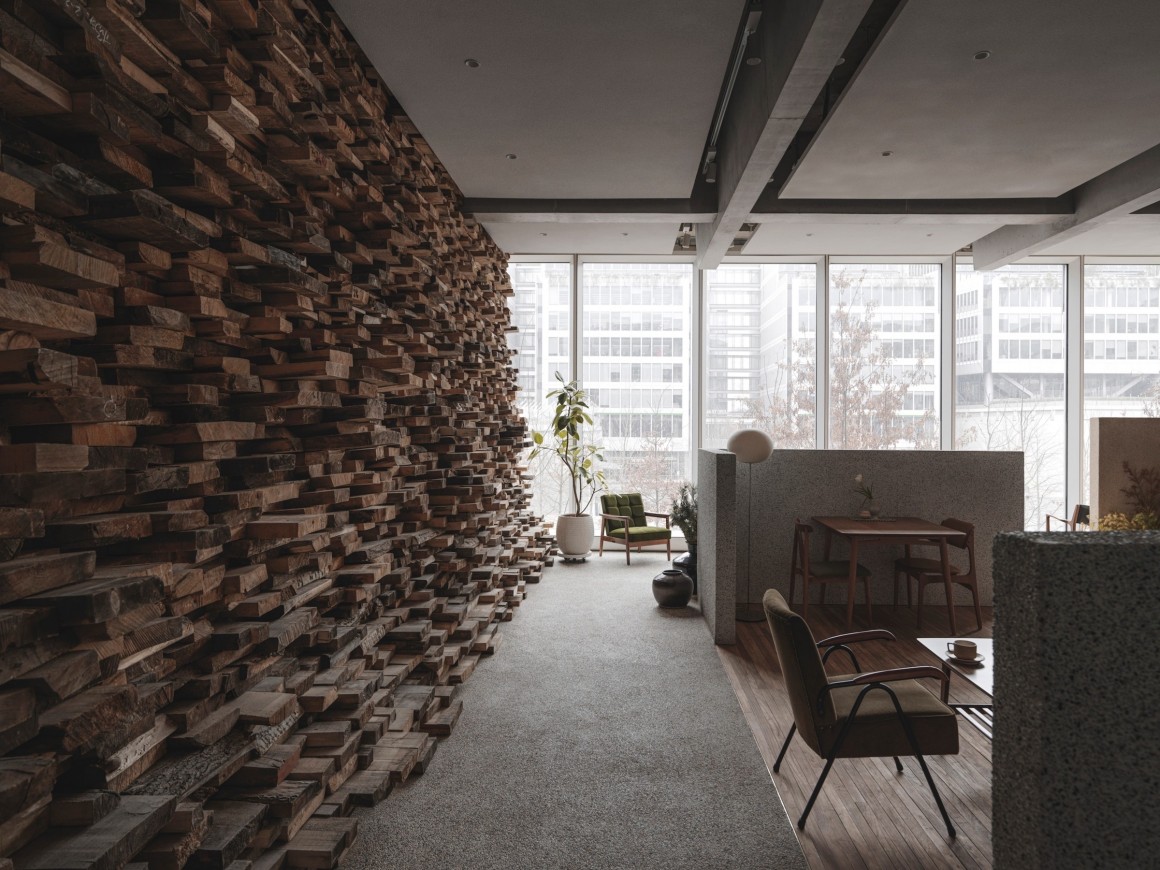
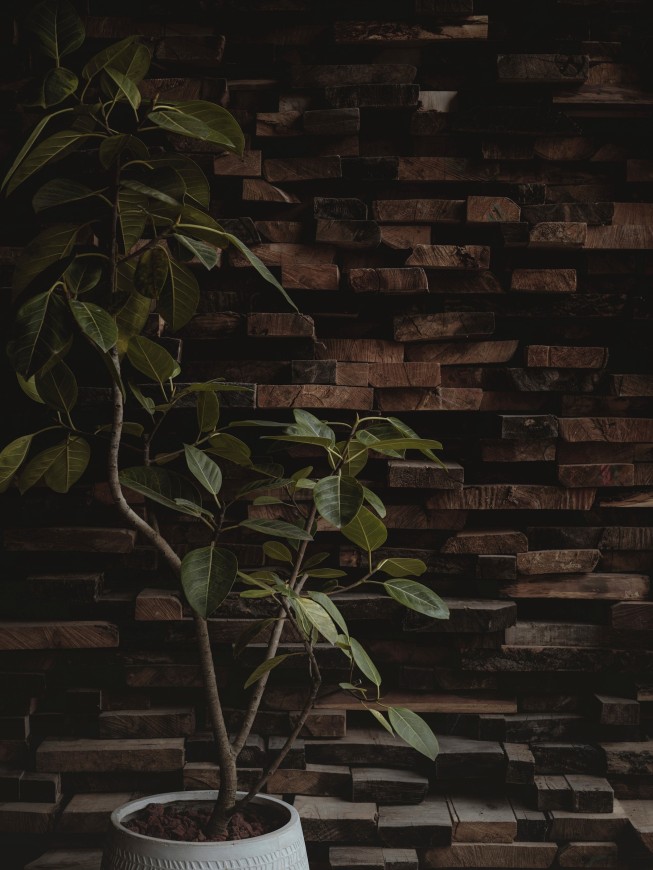


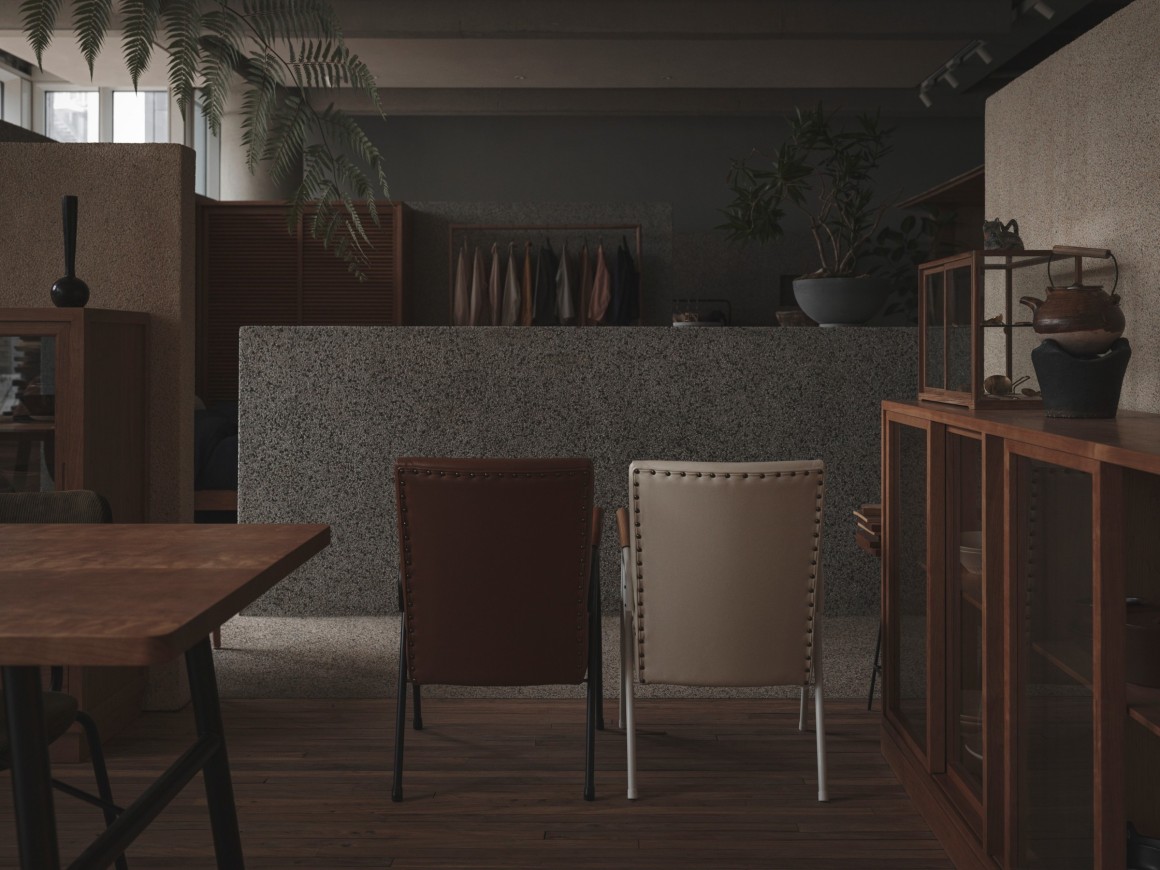
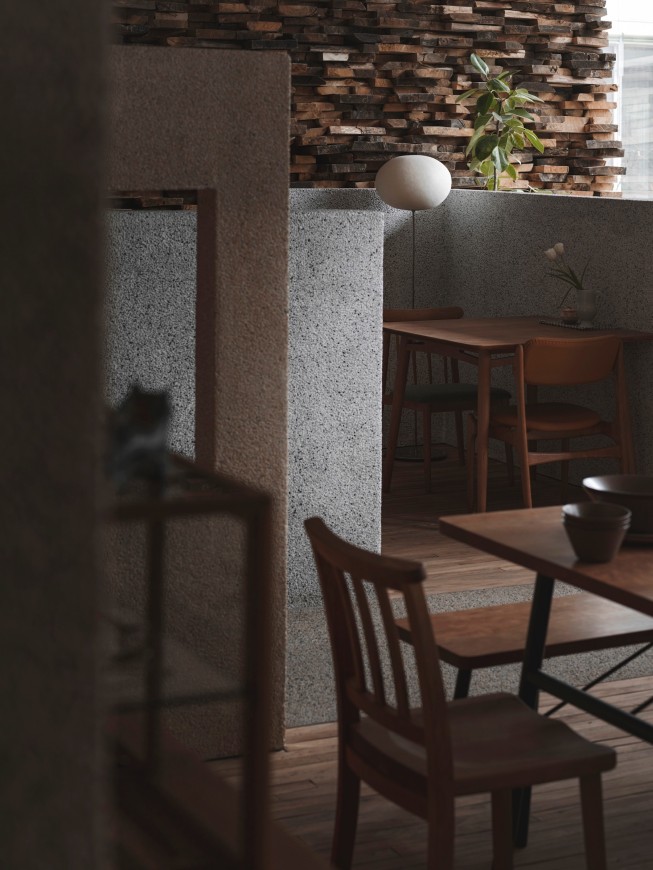

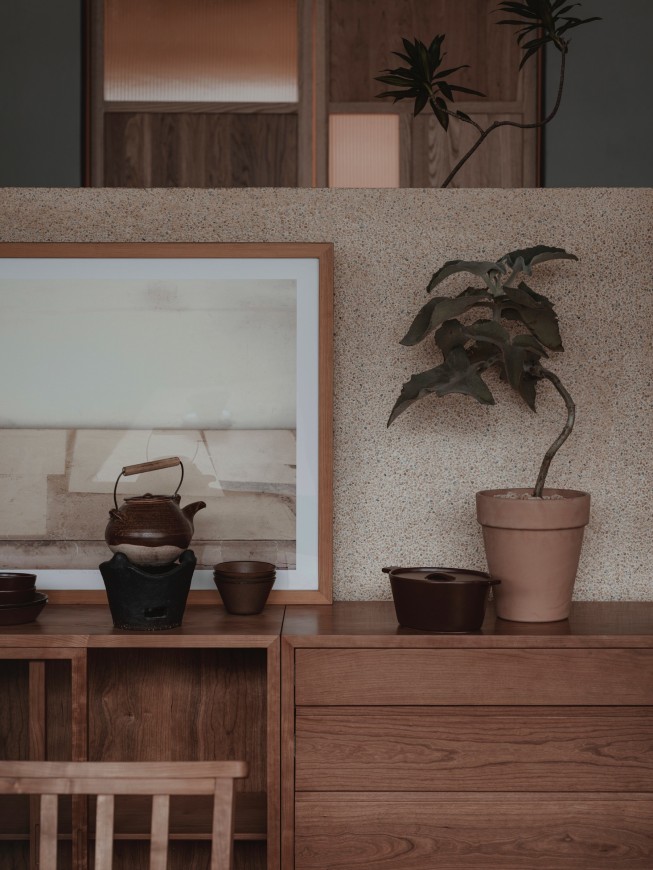

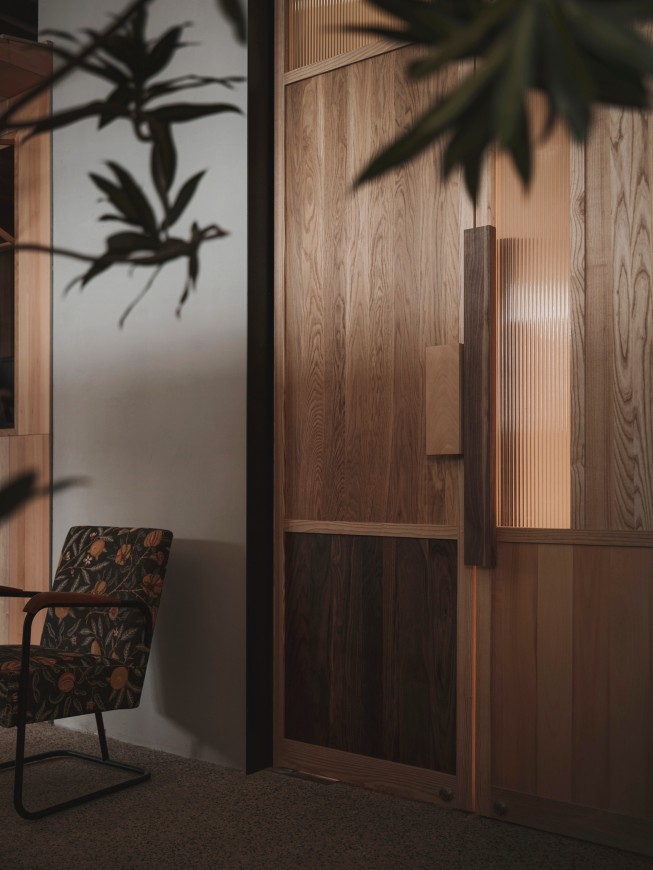
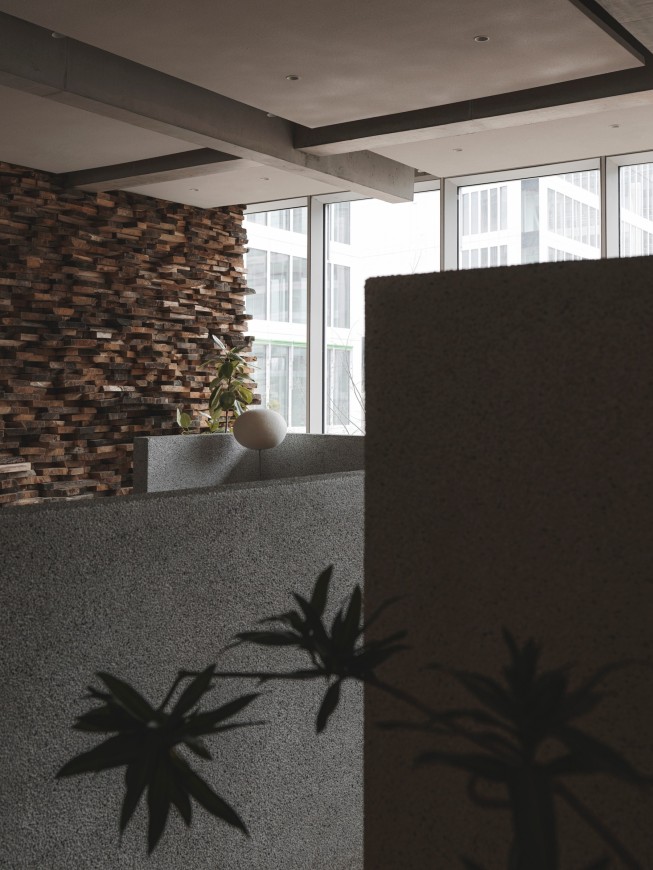
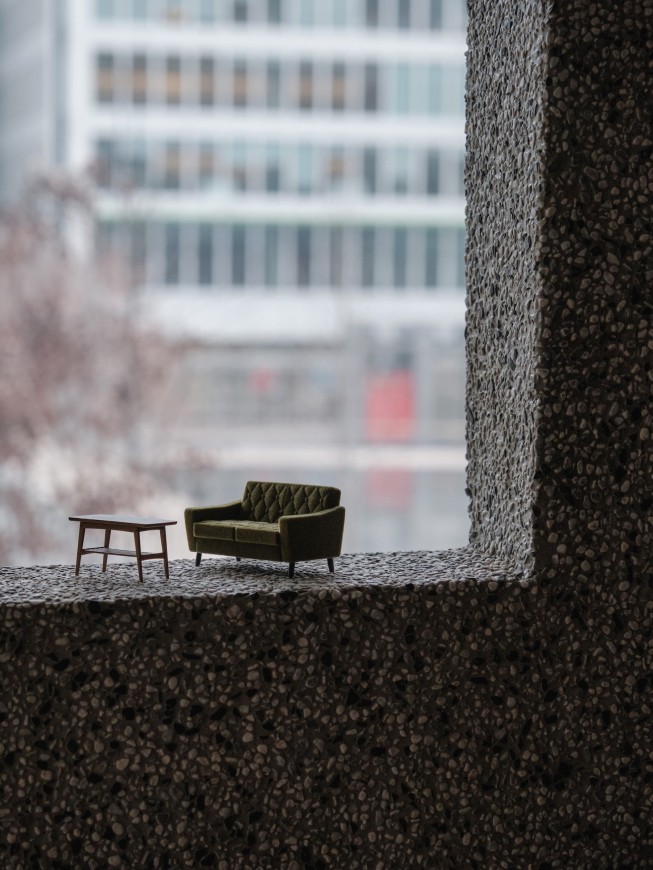
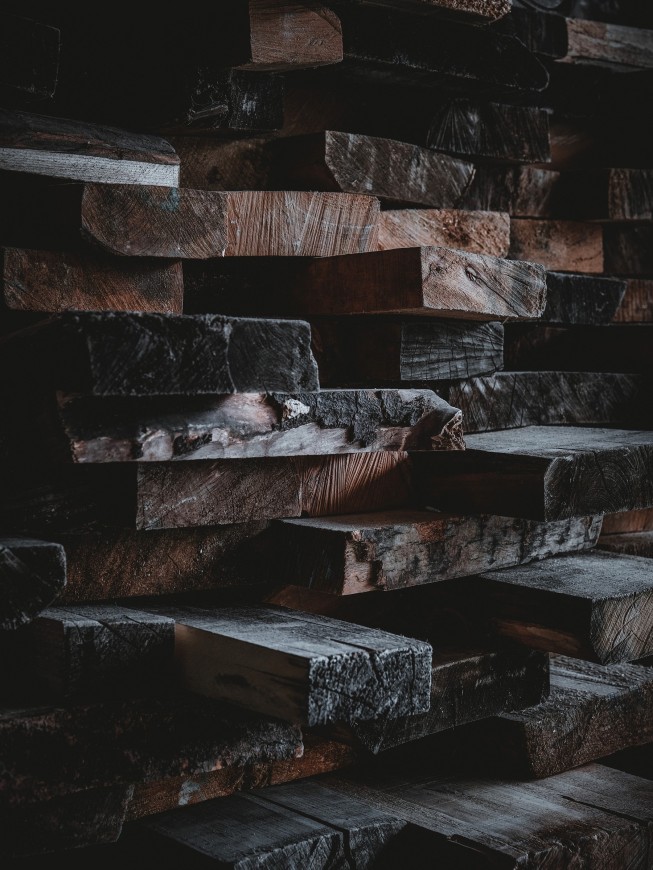


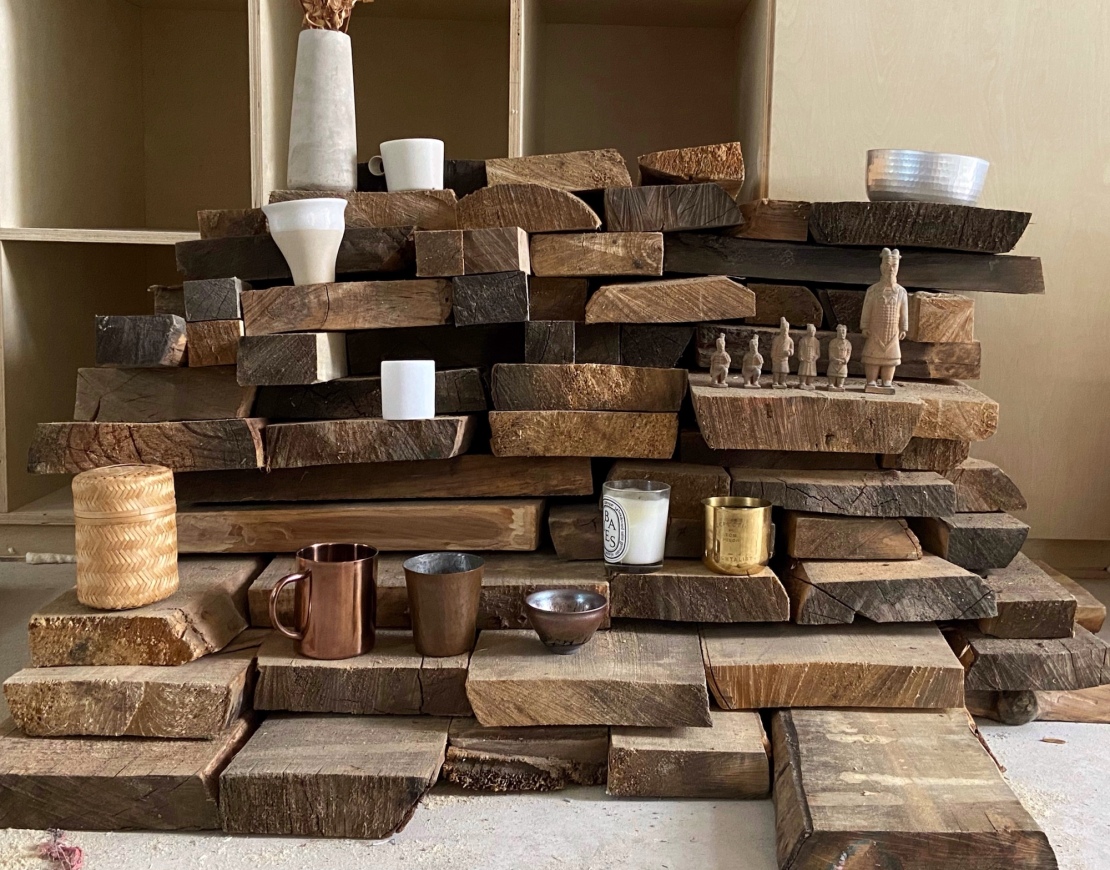
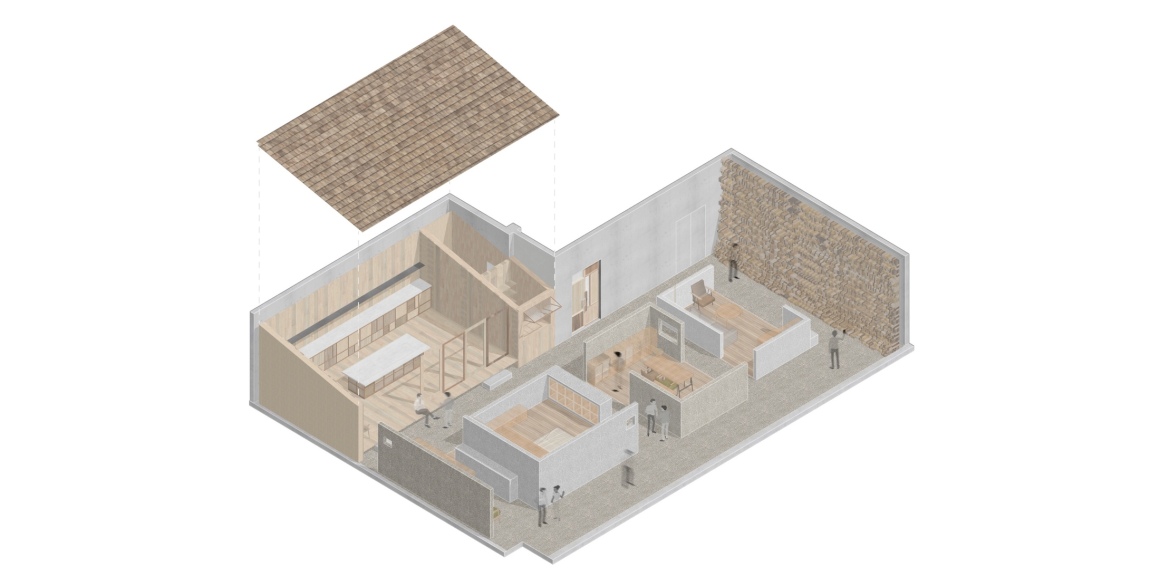


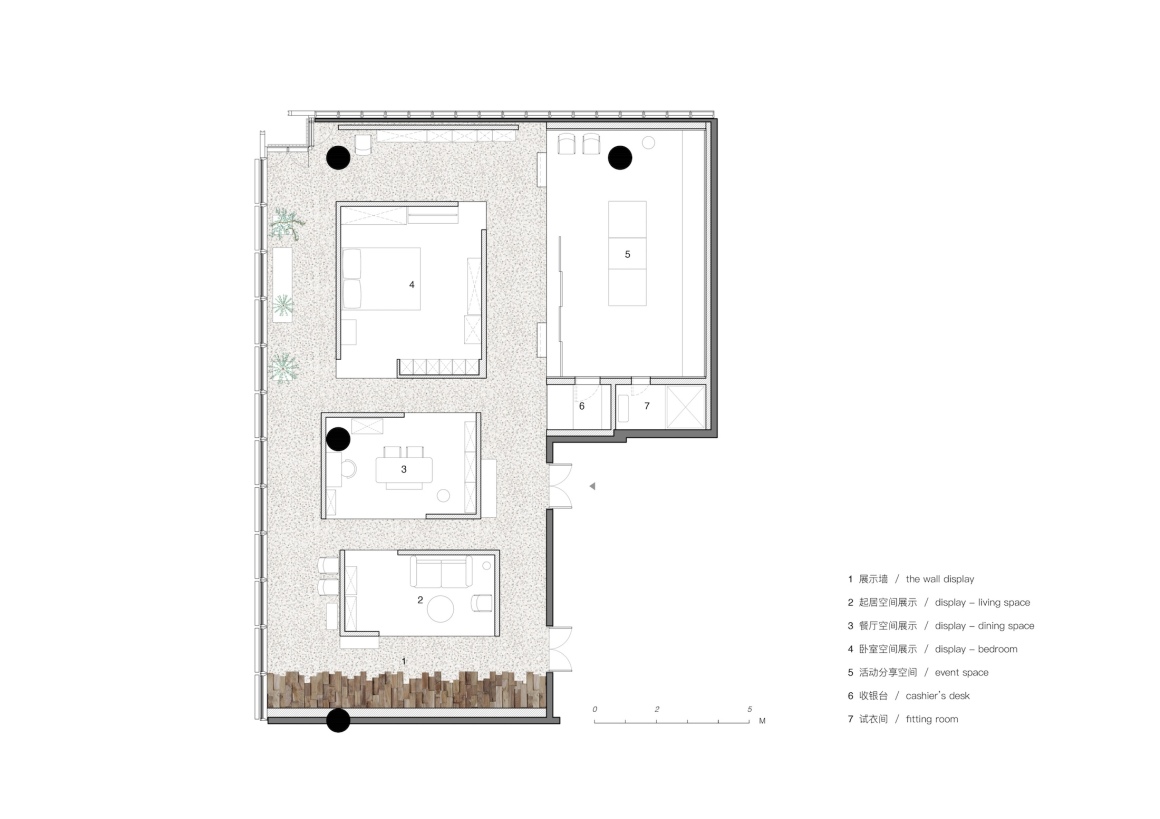


0 Comments